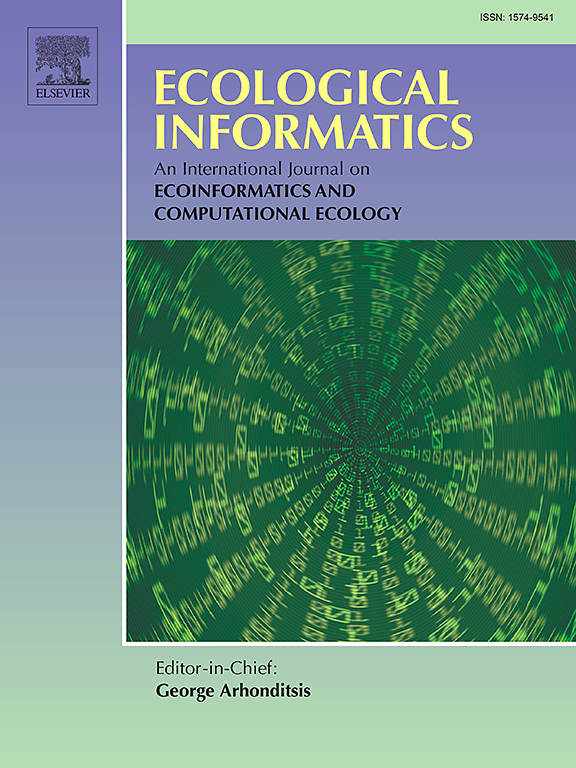Mapping forest-agroforest frontiers in the Peruvian Amazon with deep learning and PlanetScope satellite data
IF 5.8
2区 环境科学与生态学
Q1 ECOLOGY
引用次数: 0
Abstract
Monitoring complex and dynamic land systems such as tropical agroforests using remote sensing presents a significant challenge in ecological research. Traditional mapping methods are hindered not only by spectral similarity between agroforests and forests, but also by the spatial heterogeneity of forest-agroforest frontiers and the high data demand at large scales is an additional challenge. In this study, we aim to develop a modeling framework to distinguish between forests, secondary forests, agroforests (e.g. shade-grown perennials), and non-tree agricultural classes (e.g. active cropland, grassland, young fallow) in the Peruvian Amazon. To achieve this, we combine deep learning and remote sensing data, including 3-m PlanetScope satellite imagery, a Digital Elevation Model (DEM), and temporal data from the Landtrendr change detection algorithm. We conducted a sequence of modeling experiments involving different complexity of the data inputs and output classes, with overall accuracies ranging from 28.6 % to 82.9 %. Integrating a DEM as an additional helped the generalization of models across different geographical sites but did not improve the overall accuracy, whereas adding temporal information did not improve generalization or accuracy. Challenges arise in accurately identifying successional land cover types, particularly young fallow, which exhibits spectral similarity to other classes. Reducing the target classes from seven to four was found to considerably improve the accuracy of the predictions. Our findings contribute to distinguishing agroforests from forests at a large scale, providing insights into previously undetected tree-covered land uses and thus informing on sustainable ecosystem management. Yet, our results underscore the limitations of remote sensing in heterogeneous forest-agriculture landscapes and emphasize the need for further research to address persistent challenges and improve classification accuracy for monitoring global environmental change.
求助全文
约1分钟内获得全文
求助全文
来源期刊

Ecological Informatics
环境科学-生态学
CiteScore
8.30
自引率
11.80%
发文量
346
审稿时长
46 days
期刊介绍:
The journal Ecological Informatics is devoted to the publication of high quality, peer-reviewed articles on all aspects of computational ecology, data science and biogeography. The scope of the journal takes into account the data-intensive nature of ecology, the growing capacity of information technology to access, harness and leverage complex data as well as the critical need for informing sustainable management in view of global environmental and climate change.
The nature of the journal is interdisciplinary at the crossover between ecology and informatics. It focuses on novel concepts and techniques for image- and genome-based monitoring and interpretation, sensor- and multimedia-based data acquisition, internet-based data archiving and sharing, data assimilation, modelling and prediction of ecological data.
 求助内容:
求助内容: 应助结果提醒方式:
应助结果提醒方式:


